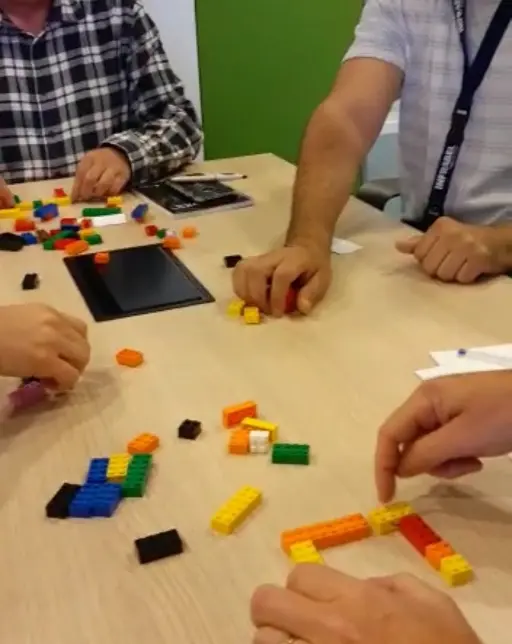This workshop is part of the trust building series. In the workshop file, you receive detailed instruction on running this workshop.
The best friendships are found when people share interests & values, have great communication and have aligned “rules” of engagement. The depth of friendship is highly correlated to the match between the secret invisible criteria and drives of people.
In professional teams these “rules” of engagement and secret criteria also exist and are often not communicated. Often causing frustration, poor performance, lack of teamwork and low morale.
The tower of Babel is a provocative teambuilding exercise that will make visible how unclear and secret criteria can affect team performance. It will allow your teams to find a way to put all the cards on the table and make them transparent.
Some of the unspoken rules that can become visible:
- A preference to work alone for a certain period of the day because i like getting in trance to get in a personal “zone”. See Flow in individuals and teams.
- Code standards that have been poorly communicated
- Importance of being in time
- Giving people the possibility to express themselves un-interrupted
- The importance of being present. (Not being away looking at social media while others work together)
Preparation
You will need +/- 80 lego bricks of different colors in sizes 4x4, 4x6, 4x8 and prepare the rule cards below. It is best to use 5 colors with a few extra bricks of completely different colors.
The goal is for the team to build a tower and using ALL the lego bricks. You need to make sure you have done it yourself so you can say you did it all alone in less than 20 minutes.

Here are some of the rules of the workshop that will only be given to individuals :
1 .You are the only one allowed to build (put bricks together) in the first layer of the building.
2. You must make sure that layer 3 only consist of yellow bricks and all colors in layer 8 have the same color
Starting
Ask the team to not starting the building until you had time to explain everything. It will be hard to stop them from starting to build. Rules are printed out on individual rule cards, they cannot be shown to others
No talking during the exercise
There will be 20 minutes to build the tower
When a rule is broken, the facilitator announces this, and the current floor needs to be rebuilt.
Provocative element : I created the tower the day before all alone in less than 20 minutes. As a team of x people, you should be well in time to finish this, as an extra bonus, I give you this box of chocolates if you succeed in doing it. Leave half of the built tower in the box and visibly deconstruct it before them so they realize the tower -can- be built. It helps counter the belief that it might be an impossible assignment
Observations
- Layer 1 takes quite long to build, it can take 1/3 of the time (> 7 minutes) because they need to discover how to communicate.
- Each layer takes a bit less time as the people start to assume the rules and conditions
- The team loses track of the real Goal : Use ALL bricks, they just focus on layer after layer, and won't realize after layer 8 they cannot build higher.
- It's quite difficult to reach the goal, teams typically will stop after 20' with 7-8 layers and only 10-15 bricks left. Quite frustrating :-)
Going deeper and opening the discussion on unspoken rules
- How does the exercise feel?
- Can you guess what the hidden acceptance criteria of colleges were?
- What similarities exist between this simulation and your real team work?
The most important question
Can you share what elements of your work, or working conditions, or goals that you do not communicate well enough to others that have an impact on your success of working as a team ?